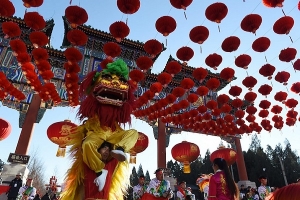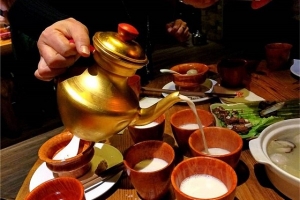When you journey to Tibet, you are not only visiting one of the world’s most breathtaking landscapes but also stepping into a land rich in spirituality, tradition, and symbolism. Among the many sacred representations you will encounter, the Eight Auspicious Symbols of Tibetan Buddhism stand out as some of the most meaningful. Adorning temple walls, thangka paintings, prayer flags, and ritual items, these symbols convey deep spiritual messages.
The Ancient Origins of the 8 Auspicious Symbols
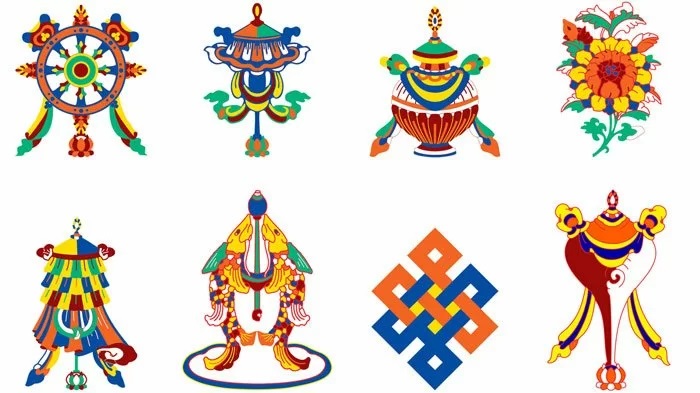
The Eight Auspicious Symbols, known as Ashtamangala in Sanskrit, have their roots in ancient India. Initially, many of these symbols were part of royal and religious ceremonies, used to honor kings during coronations and major events. As Buddhism flourished and spread, these symbols were gradually adopted into its teachings, gaining new layers of spiritual significance. When Buddhism reached Tibet, these symbols were fully embraced and integrated into Tibetan Buddhist practice, infused with local interpretations and cultural depth.
Each symbol represents an offering made by celestial beings to the Buddha upon his enlightenment, symbolizing blessings, protection, and spiritual attainments. Today, they are more than just decorative motifs; they are essential elements of Buddhist philosophy and are believed to bring prosperity, health, and spiritual success.
Why Are They Called “Auspicious”?
The term “auspicious” signifies something that brings good fortune, success, and positive outcomes. In Tibetan Buddhism, these symbols are considered powerful spiritual tools that encourage favorable conditions for practice and enlightenment. Displayed on altars, paintings, and ritual objects, they not only beautify sacred spaces but also serve as reminders of the path to liberation. They are often used in meditation, focusing the mind on qualities like compassion, wisdom, purity, and courage.
The Eight Auspicious Symbols and Their Profound Meanings
1. The Endless Knot

The Endless Knot is a beautiful, interwoven design with no beginning and no end. It represents the interconnectedness of all things, showing how everything in the universe is linked through cause and effect. In Buddhist philosophy, this symbol reflects the interplay of wisdom and compassion, the eternal truth of interdependence, and the unity of samsara and nirvana. Meditating on the Endless Knot encourages understanding of the complex web of karma and helps cultivate a sense of balance and harmony in life.
2. The Treasure Vase
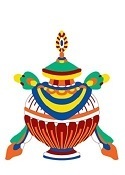
The Treasure Vase symbolizes inexhaustible wealth and spiritual abundance. Shaped like a round, full vase with a wide body and a narrow neck, it is often depicted as overflowing with precious jewels and sacred items. This symbol conveys the idea that true prosperity comes not from material wealth alone but from the endless richness of spiritual practice. It also represents long life, health, and the accumulation of positive energy and wisdom.
3. The Lotus Flower
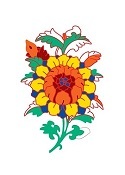
The Lotus Flower is perhaps one of the most universally recognized symbols of purity and enlightenment. Growing from muddy waters but blooming in pristine beauty, the lotus teaches that one can rise above the difficulties and impurities of life to achieve spiritual awakening. In Tibetan Buddhism, the lotus is often associated with the purity of mind, speech, and body, and the potential for all beings to attain Buddhahood. The image of the Buddha sitting atop a lotus throne is a powerful reminder of the transformative journey from ignorance to enlightenment.
4. The Two Golden Fish
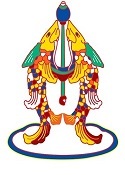
The Two Golden Fish are a symbol of joy, freedom, and abundance. In the water, fish swim effortlessly and freely, unhindered by barriers, representing the ability of beings to move through the ocean of suffering without fear or obstruction. They also symbolize fertility and harmony, often appearing in Buddhist art to encourage happiness and success in both spiritual and worldly pursuits. In Tibetan culture, they sometimes represent conjugal harmony, highlighting the importance of companionship and loyalty.
5. The Parasol

The Parasol is a sign of royal dignity and spiritual protection. It represents shelter from the intense heat of suffering, harmful forces, and emotional turmoil. Just as a parasol protects from the harsh sun, spiritual practice protects from negative influences. In many depictions, the parasol features a dome-shaped top symbolizing wisdom and a skirt around it symbolizing compassion. Together, they provide complete protection for the body, mind, and soul on the journey to enlightenment.
6. The Conch Shell
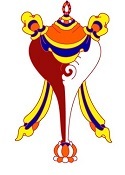
The white Conch Shell, spiraling to the right, is a traditional emblem of the sound of the Dharma. Its clear and penetrating sound is said to awaken beings from ignorance and encourage them toward virtuous deeds and spiritual awakening. Historically used to announce important events or victories, in a Buddhist context, the conch shell signifies the spread of the Buddha’s teachings across the world, reaching all beings with clarity and strength.
7. The Victory Banner
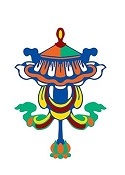
The Victory Banner represents the Buddha’s triumph over the four negative forces known as the Maras: desire, fear of death, pride, and distraction. In a broader sense, it symbolizes victory over all internal and external obstacles to spiritual progress. The Victory Banner reminds practitioners of the ultimate goal of Buddhism: complete liberation from the cycle of suffering through the conquering of ignorance and the development of wisdom.
8. The Dharma Wheel

The Dharma Wheel, also called the Dharmachakra, is perhaps the most important symbol in Buddhism. It consists of a hub, a rim, and eight spokes. The hub represents moral discipline, the spokes symbolize the Noble Eightfold Path, and the rim signifies concentration and mindfulness which hold everything together. Turning the Dharma Wheel is an expression of setting the teachings in motion, leading beings on the path to enlightenment. The Buddha’s first teaching after enlightenment, delivered at Deer Park in Sarnath, is known as the first turning of the Dharma Wheel.
Final Thoughts
The Eight Auspicious Symbols of Tibetan Buddhism are more than beautiful decorations; they are profound visual expressions of the teachings and aspirations of the Buddhist path. For travelers to Tibet, encountering these sacred symbols can deepen the journey, offering moments of reflection and inspiration. They serve as gentle yet powerful reminders of the values of compassion, wisdom, perseverance, and purity that lead to enlightenment.
As you explore the magnificent monasteries, sacred sites, and vibrant culture of Tibet with Journey2Tibet, take time to notice these symbols. Let them guide your experience, inspire your heart, and enrich your understanding of the timeless wisdom that permeates this mystical land.








